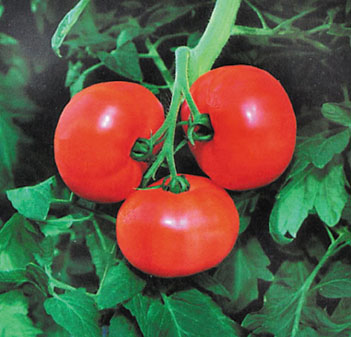Turning Gas Into Greens
For space missions, food must be carried aboard the shuttle. As we embark upon longer explorations into the unknown, more provisions will have to be packed for these longer missions. In order to lengthen the amount of time humans can spend in space and still launch minimal payloads, astronauts will have to be able to cultivate their own food. So, how do you turn an astronaut into a farmer? NASA asked the same question. The answer is an experimental greenhouse that uses methane from decomposing trash to fuel a system that makes food.
Through grant and research assistance from NASA's Goddard Space Flight Center, scientists from Cook College, Rutgers University, and Stevens Institute of Technology have been conducting studies at the Burlington County Research and Demonstration Greenhouse, located at the Burlington County Resource Recovery Complex in New Jersey. Although the combination of garbage and growth may seem unusual, it has turned out to be a perfect match, by providing tomatoes that are firm, juicy, and a big hit at local food markets.
Biogasses created by the anaerobically decomposing trash are necessary to fulfill the energy needs of this revolutionary greenhouse. The primary emission, methane, is piped to the greenhouse boiler and used to fuel the hot water heating system. Thus far, the use of biogas has drastically reduced the operating costs of the greenhouse, eliminating the need for non-renewable fuels. The biogas will also generate electricity for the greenhouse in the near future.
In order to keep the system relatively closed, the plants are irrigated with recycled plant nutrients such as nitrogen, phosphorus, potassium, calcium, and magnesium. These nutrients are delivered through hydroponics, the cultivation of plants in a nutrient solution rather than in soil.
Also unique to the greenhouse are the high-pressure sodium lamps that augment the natural light, thereby boosting production and reducing cropping time. A total of 16 hours of light are provided to the crop each day, year-round. The most unique aspect of the process is one that is the least high-tech--bees are kept in the greenhouse to pollinate the tomato flowers.
Because the elements of this new method work together so efficiently, it only takes about 90 days for a seed to germinate and produce a tomato harvest. Not only is the food produced faster, the manual labor needed for the upkeep of the plants is also drastically reduced.
The system was designed to produce tomatoes on a year-round schedule. According to David Specca, Director of Developmental Programs at Rutgers University and Greenhouse Manager, the greenhouse produces about ten times the amount of tomatoes that would be grown outdoors in a similar space. When at full production, the operation is capable of producing 10 pounds of tomatoes per square foot per year. That's a lot of marinara.
All of the tomatoes are sold to RLB Distributors, Inc., of West Caldwell, New Jersey, and then retailed at King Supermarkets, also of New Jersey. The tomatoes are individually marked with stickers, identifying their premium quality. Presently, the demand for these space-age tomatoes is exceeding the supply.
While the primary product of the greenhouse is the tomato, other food crops can be added. Because of NASA's ongoing efforts and assistance, these innovations in agriculture will provide future space missions with renewable food sources, as well as innovative methodologies in commercial farming. A system of this capability could provide food sources for areas that are, for various reasons, incapable of traditional agriculture, such as third-world countries and desert lands. NASA assistance has enabled the creation of a truly innovative process. Hopefully, the work done at the greenhouse will one day provide food not only for New Jersey residents, but for the rest of us on Earth and those in space as well.

Through NASA funding and assistance, the Burlington County Research and Demonstration Greenhouse in New Jersey, uses a revolutionary growing system to produce tomatoes sold in local grocery stores. It is hoped that research done at the greenhouse will lead to methods for growing food in space.













